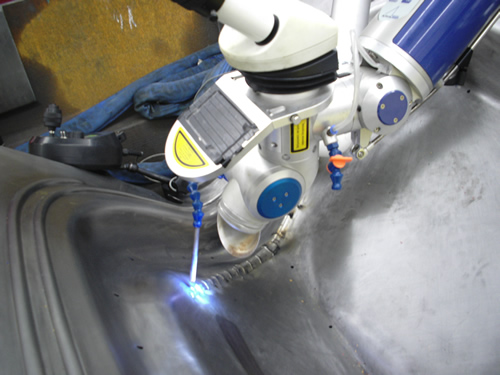Laser Welding
Laser welding has become an integral part of medical and manufacturing processes over the past two decades, from hair and vein removal, jewellery repair and microelectronics, to ship building and automotive assembly.
The main advantages are that lasers require a low heat input compared with other welding processes. In addition, they produce only a small heat affected zone (HAZ) on the welded materials, the distortion produced by the welding is low and can be completed at very high speeds.

During welding, a set of mirrors transfers the laser beam onto the work piece. As the beam moves over the work piece, its energy melts the material and forms a joint. There are four main weld configurations.
- A butt weld is one when the parts of the materials to be assembled all lie on the same plane.
- A fillet lap weld is one where the edge of one material is melted to join onto the surface of another material.
- An overlap weld is one where the materials lie on top of each other.
- A flange weld is where two pieces of material are bent and their edges fused together.
There are two main principal methods employed in laser welding:
- Conduction mode wherein the laser beam is focused on a particular area of the material to be welded and thermal conduction transfers the heat to the joint area. Here it melts and fuses the material.
- Keyhole welding, also known as penetration welding, where the laser beam is focussed on a single location where it penetrates into stacked materials and melts them at that point. They fuse together on cooling.
Two common types of laser welding technologies are Nd:YAG and CO2. Both lasers operate in the infra-red part of the electromagnetic spectrum. An Nd: YAG (neodymium-doped yttrium aluminium garnet) crystal is the lasing medium, or optical source, in the former. This is a low power laser that can be highly focused. Its uses include cosmetics, medicine, dentistry, ophthalmology, weapons range finders and engraving.
CO2 lasers use high purity carbon dioxide gas mixed with helium and nitrogen as the lasing medium. These are powerful devices that can cut into materials and are used widely for keyhole welding in both medical and industrial applications.
For more information see laser welding machines and systems